Meet the 10 Animals That Hoard
Hoarding (also known as caching) is not just a fascinating psychological quirk of humans. It’s also an instinctive behavior in which animals store food for later use. The most common reason why animals hoard is to save food in times of surplus (usually in the summer and fall) to prepare for times of scarcity (in the winter); since many animals do not hibernate for the winter, hoarding is a necessary survival strategy. A second (and much less common) reason to hoard is to ripen inedible food. Thirdly, in an unusual twist on hoarding, a 2006 study found that bonobos and orangutans selected, transported, and even stored tools for up to 14 hours before use, but it’s unclear how much this plays a role in their natural behavior.
There are generally two types of hoarders: the scatter hoarders (which bury food throughout their entire territory) and burrow hoarders (which concentrate food near their nest). The former behavior plays an important ecological role in the spread of seeds because the animal will sometimes forget some of its cache locations and let the seed germinate.
Hoarding obviously requires quite a bit of intelligence and hard work on the part of the animal. It also opens up some interesting behavior. In an attempt to find an easy meal, some animals will steal or raid the hidden caches created by others. Hoarders have likewise developed new strategies to trick the thieves or guard their stash. This list will cover these behaviors more in-depth with the 10 most fascinating hoarders in the animal kingdom.
#10: Fiddler Crabs

The fiddler crab is a family of small marine crabs, native to salt marshes and sandy beaches. Based on studies in which they were deliberately provided food, we know that the milky fiddler crabs of eastern Asia have the ability to store algae, copepods, and other food particles for more times of heavy rainfall when they might be unable to forage. The importance of hoarding is amplified by the precariousness of life on nutrient-poor beaches. In the study, the females were most likely to forage in the mating season, suggesting it may have some reproductive utility.
#9: Fire Ants
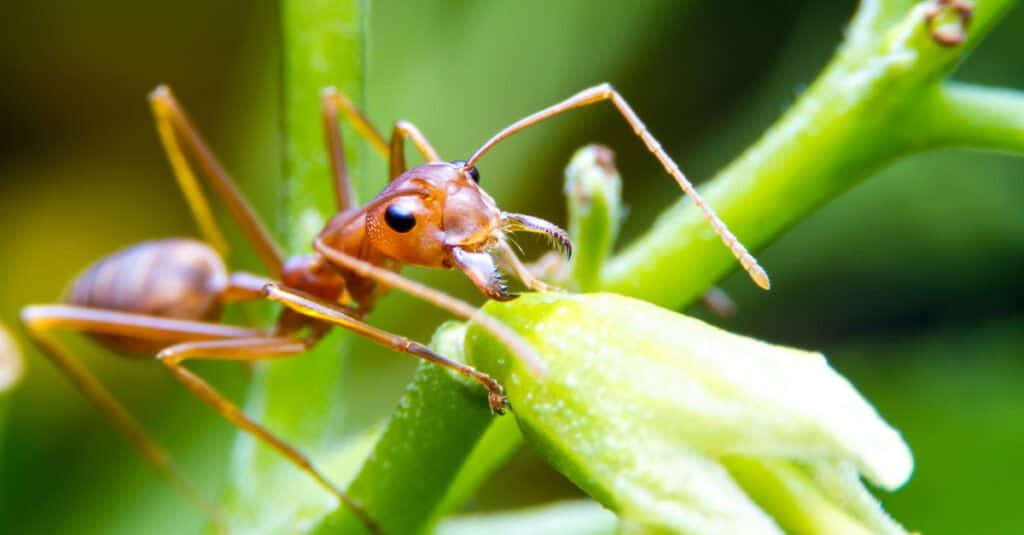
A fire ant is a group of several stinging species with rather toxic and painful venom. After immobilizing its prey, the ant will bring it back to the nest and store the pieces just beneath the mound. The meat is then dried out to create a kind of jerky that provides an abundant source of food during times of scarcity. The evidence suggests that it will even raid the nests of other ant species and bring back the parts like some kind of conquering army.
A closely related group of insects called the honeypot ants has a particularly fascinating and unique behavior. These species have the ability to create specialized workers that will gorge on honey to the point where their abdomens actually start to swell. These workers will then hang from the ceiling for months or even years at a time, like living storage vessels, so other ants can extract nutrients from them.
#8: Moles

Since moles spend the winter months hidden away in underground burrows, they need a good supply of food to help them survive. During the fall, they will incapacitate earthworms, either by mutilating them or paralyzing them with toxins and then keep them stored alive in underground caches. A single mole can easily collect hundreds of worms at a time. The worms lucky enough to survive this ordeal may sometimes grow back their mutilated heads and escape the burrow.
#7: Short-tailed Shrews

All five species of short-tailed shrews have the ability to paralyze their prey (such as insect larvae or snails) with their toxic venom. The prey is kept alive but comatose for days or weeks at a time until it’s ready to be consumed. If the prey wakes up prematurely, then the shrew will simply bite it again to subdue it.
#6: Corvids

Corvids, like ravens, crows, rooks, and jays, are among the most intelligent animals in the world; they have an extremely high brain-to-body ratio and an excellent memory. It’s well-known that they like to hoard shiny objects such as pebbles, jewelry, or golf balls, perhaps to impress peers. What many people may not know is that hoarding is part of their natural survival strategy. They may have evolved this ability as a result of their dietary habits. Since they obtain most of their food from rotting carcasses killed by other predators, corvids do not necessarily know where their next meal will come from. This makes hoarding an obviously appealing strategy.
But corvid hoarding goes above and beyond your average animal behavior. Studies have shown that they have the ability to plan for the future and choose from a range of different options. Their excellent spatial memory enables them to recall cache locations months after storage, perhaps using landmarks to help them navigate. The California scrub jay, a member of the corvid family, is a particularly impressive hoarder. They can remember more than 200 distinct food caches and even plan their storage based on future needs.
#5: Woodpeckers
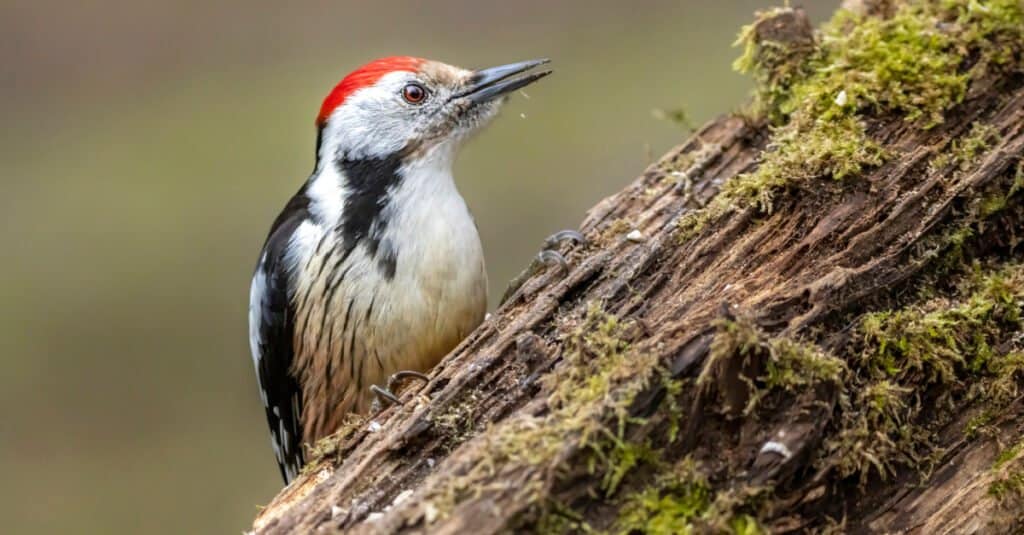
There are several species of woodpeckers that have the ability to store food, but perhaps none of them is quite as prodigious as the acorn woodpeckers, which live in the western part of North America. Entire families or communities of woodpeckers (they are polyamorous and keep multiple mates) will bore thousands of holes into a single tree and stuff them full of acorns. The woodpeckers are even particularly discerning about the type of tree it chooses as a potential candidate. It prefers dead limbs or trunks with thick bark so it doesn’t drill into the sap. Unfortunately, it also shows a preference for human homes and sheds, which can cause quite a bit of damage.
The strategy of stuffing a tree full of acorns is born out of necessity. Since winters in their native range tend to be warm and wet, the woodpeckers can’t just store the acorns in a pile, because they would start to rot. Instead, lodging them into a tree ensures they will dry out and last long enough to consume later. While insects are actually its main food source, acorns are a convenient backup when food gets scarce.
However, it’s also a very time-consuming and labor-intensive process to drill thousands of holes in a tree and constantly move the acorns around to the properly sized holes (since they shrink in size when dried). They spend a lot of their lives devoted to this one task, but it ensures the acorn woodpeckers rarely go without food.
#4: Rats and Mice
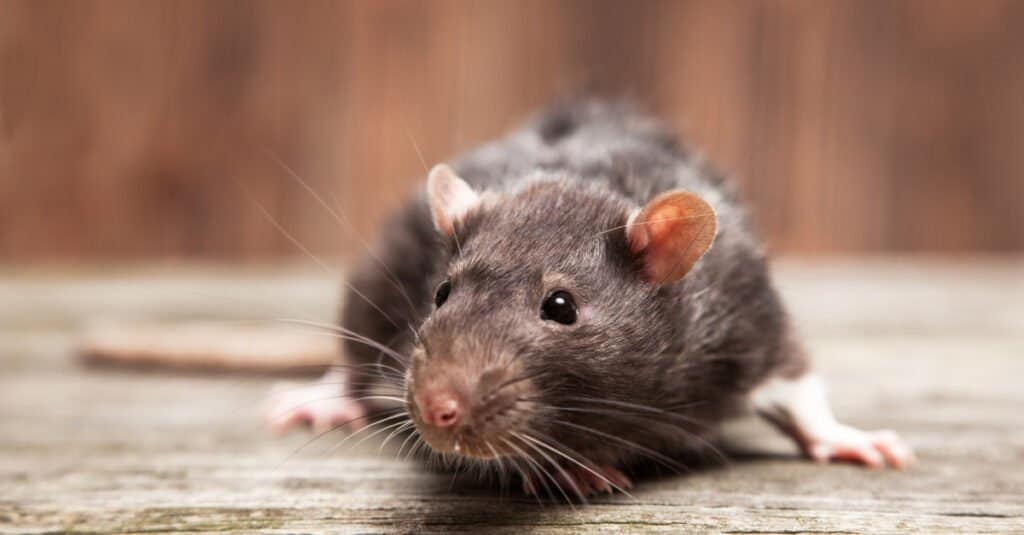
While their hoarding behavior is perhaps not quite as well-known as other rodents, rats and mice do indeed store their food for later use. The kangaroo rats even have especially pronounced cheek pouches, just like hamsters, to temporarily store food before they can properly cache it. If these rodents somehow get into the home, their cached food can be found almost anywhere in tight or dark spaces, including the attic, kitchen wall, furniture, appliances, and the space under the bathtub.
#3: Hamsters
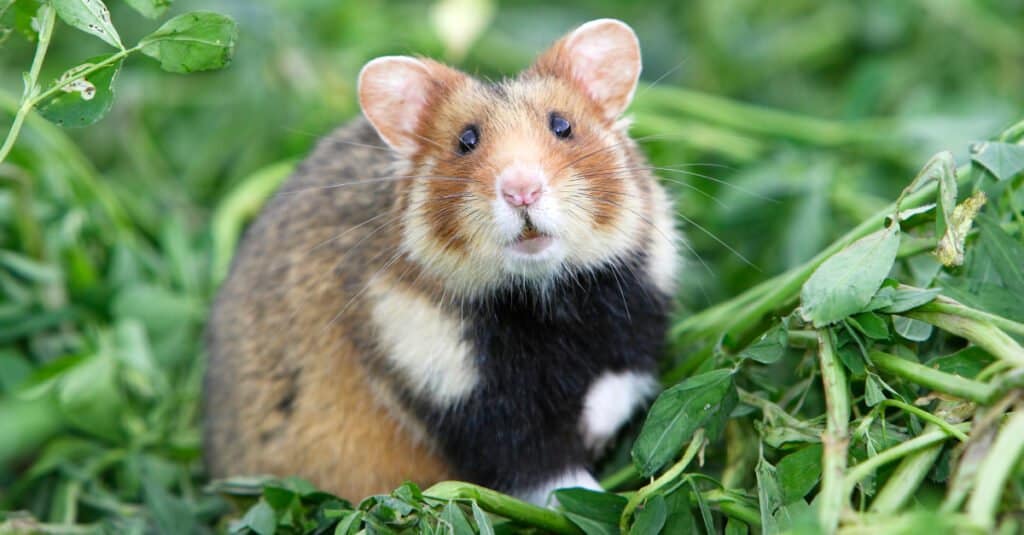
Hamsters have evolved an interesting storage solution. When they find food, they will sometimes temporarily collect it in their expansive cheek pouches, practically doubling the size of their heads. Once they’re safely back at the burrow, the hamsters will store their food in a hoarding chamber to save it for scarcer times.
#2: Chipmunks
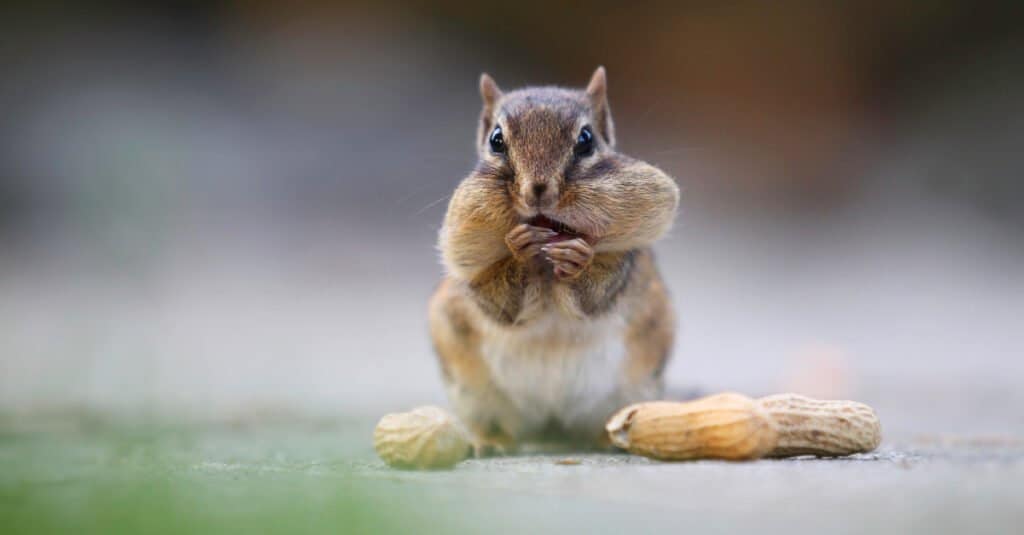
iStock.com/flySnow
Nearly all species of chipmunks, including the Siberian chipmunk and western chipmunk, harvest and store their food for the winter. While some species remain active for the entire year, some chipmunks do enter a prolonged state of low metabolic activity in which they don’t need to eat quite as much food to survive. Unlike the squirrel, the chipmunk usually prefers to concentrate the food together in a single burrow.
#1: Squirrels
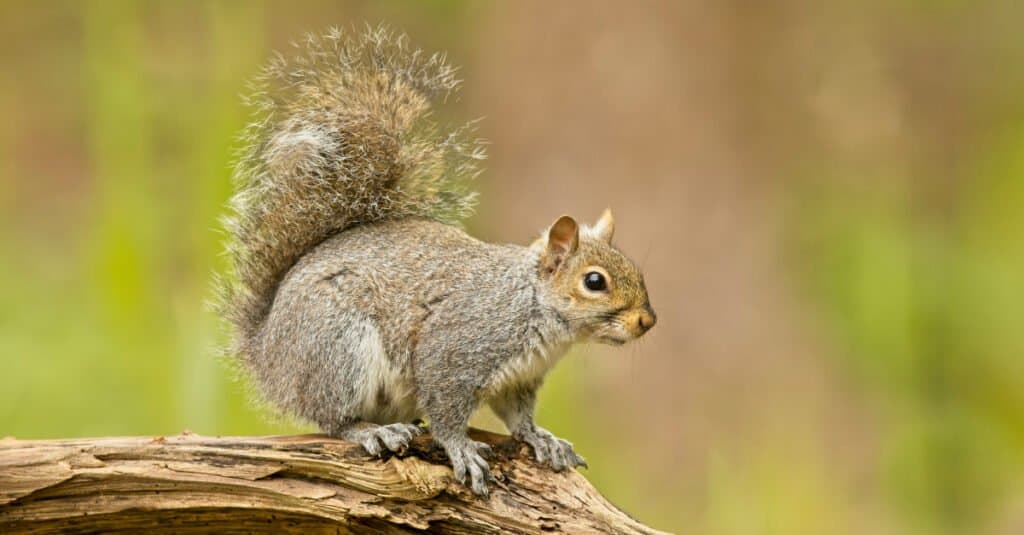
Tree squirrels (including both the red and gray squirrels) are considered to be the quintessential hoarders of the animal kingdom. This hoarding behavior involves quite an elaborate process of collecting and storing a wide variety of different foods, including nuts, acorns, seeds, berries, and even human food, in underground caches to prepare for the long and arduous winter. They seem to organize the food by size, type, and perhaps even taste to more easily keep tabs on them.
Since their territory can easily reach up to 7 acres around their home tree, they rely on their prodigious memory and keen sense of smell to locate the buried caches. Scientists have even found that their brains will expand slightly to make memorization easier. To deal with potential thieves, the squirrels will sometimes pretend to bury the food in the ground but secretly keep it. When the thief is distracted, it will make a clean getaway. This can become an interesting game of cat and mouse, but for the squirrels, it might be a matter of survival.
More from A-Z Animals
Hoarding (also known as caching) is not just a fascinating psychological quirk of humans. It’s also an instinctive behavior in which animals store food for later use. The most common reason why animals hoard is to save food in times of surplus (usually in the summer and fall) to prepare for times of scarcity (in the winter); since many animals do not hibernate for the winter, hoarding is a necessary survival strategy. A second (and much less common) reason to hoard is to ripen inedible food. Thirdly, in an unusual twist on hoarding, a 2006 study found that bonobos and orangutans selected, transported, and even stored tools for up to 14 hours before use, but it’s unclear how much this plays a role in their natural behavior.
There are generally two types of hoarders: the scatter hoarders (which bury food throughout their entire territory) and burrow hoarders (which concentrate food near their nest). The former behavior plays an important ecological role in the spread of seeds because the animal will sometimes forget some of its cache locations and let the seed germinate.
Hoarding obviously requires quite a bit of intelligence and hard work on the part of the animal. It also opens up some interesting behavior. In an attempt to find an easy meal, some animals will steal or raid the hidden caches created by others. Hoarders have likewise developed new strategies to trick the thieves or guard their stash. This list will cover these behaviors more in-depth with the 10 most fascinating hoarders in the animal kingdom.
#10: Fiddler Crabs

The fiddler crab is a family of small marine crabs, native to salt marshes and sandy beaches. Based on studies in which they were deliberately provided food, we know that the milky fiddler crabs of eastern Asia have the ability to store algae, copepods, and other food particles for more times of heavy rainfall when they might be unable to forage. The importance of hoarding is amplified by the precariousness of life on nutrient-poor beaches. In the study, the females were most likely to forage in the mating season, suggesting it may have some reproductive utility.
#9: Fire Ants

A fire ant is a group of several stinging species with rather toxic and painful venom. After immobilizing its prey, the ant will bring it back to the nest and store the pieces just beneath the mound. The meat is then dried out to create a kind of jerky that provides an abundant source of food during times of scarcity. The evidence suggests that it will even raid the nests of other ant species and bring back the parts like some kind of conquering army.
A closely related group of insects called the honeypot ants has a particularly fascinating and unique behavior. These species have the ability to create specialized workers that will gorge on honey to the point where their abdomens actually start to swell. These workers will then hang from the ceiling for months or even years at a time, like living storage vessels, so other ants can extract nutrients from them.
#8: Moles

Since moles spend the winter months hidden away in underground burrows, they need a good supply of food to help them survive. During the fall, they will incapacitate earthworms, either by mutilating them or paralyzing them with toxins and then keep them stored alive in underground caches. A single mole can easily collect hundreds of worms at a time. The worms lucky enough to survive this ordeal may sometimes grow back their mutilated heads and escape the burrow.
#7: Short-tailed Shrews

All five species of short-tailed shrews have the ability to paralyze their prey (such as insect larvae or snails) with their toxic venom. The prey is kept alive but comatose for days or weeks at a time until it’s ready to be consumed. If the prey wakes up prematurely, then the shrew will simply bite it again to subdue it.
#6: Corvids

Corvids, like ravens, crows, rooks, and jays, are among the most intelligent animals in the world; they have an extremely high brain-to-body ratio and an excellent memory. It’s well-known that they like to hoard shiny objects such as pebbles, jewelry, or golf balls, perhaps to impress peers. What many people may not know is that hoarding is part of their natural survival strategy. They may have evolved this ability as a result of their dietary habits. Since they obtain most of their food from rotting carcasses killed by other predators, corvids do not necessarily know where their next meal will come from. This makes hoarding an obviously appealing strategy.
But corvid hoarding goes above and beyond your average animal behavior. Studies have shown that they have the ability to plan for the future and choose from a range of different options. Their excellent spatial memory enables them to recall cache locations months after storage, perhaps using landmarks to help them navigate. The California scrub jay, a member of the corvid family, is a particularly impressive hoarder. They can remember more than 200 distinct food caches and even plan their storage based on future needs.
#5: Woodpeckers

There are several species of woodpeckers that have the ability to store food, but perhaps none of them is quite as prodigious as the acorn woodpeckers, which live in the western part of North America. Entire families or communities of woodpeckers (they are polyamorous and keep multiple mates) will bore thousands of holes into a single tree and stuff them full of acorns. The woodpeckers are even particularly discerning about the type of tree it chooses as a potential candidate. It prefers dead limbs or trunks with thick bark so it doesn’t drill into the sap. Unfortunately, it also shows a preference for human homes and sheds, which can cause quite a bit of damage.
The strategy of stuffing a tree full of acorns is born out of necessity. Since winters in their native range tend to be warm and wet, the woodpeckers can’t just store the acorns in a pile, because they would start to rot. Instead, lodging them into a tree ensures they will dry out and last long enough to consume later. While insects are actually its main food source, acorns are a convenient backup when food gets scarce.
However, it’s also a very time-consuming and labor-intensive process to drill thousands of holes in a tree and constantly move the acorns around to the properly sized holes (since they shrink in size when dried). They spend a lot of their lives devoted to this one task, but it ensures the acorn woodpeckers rarely go without food.
#4: Rats and Mice

While their hoarding behavior is perhaps not quite as well-known as other rodents, rats and mice do indeed store their food for later use. The kangaroo rats even have especially pronounced cheek pouches, just like hamsters, to temporarily store food before they can properly cache it. If these rodents somehow get into the home, their cached food can be found almost anywhere in tight or dark spaces, including the attic, kitchen wall, furniture, appliances, and the space under the bathtub.
#3: Hamsters

Hamsters have evolved an interesting storage solution. When they find food, they will sometimes temporarily collect it in their expansive cheek pouches, practically doubling the size of their heads. Once they’re safely back at the burrow, the hamsters will store their food in a hoarding chamber to save it for scarcer times.
#2: Chipmunks

iStock.com/flySnow
Nearly all species of chipmunks, including the Siberian chipmunk and western chipmunk, harvest and store their food for the winter. While some species remain active for the entire year, some chipmunks do enter a prolonged state of low metabolic activity in which they don’t need to eat quite as much food to survive. Unlike the squirrel, the chipmunk usually prefers to concentrate the food together in a single burrow.
#1: Squirrels

Tree squirrels (including both the red and gray squirrels) are considered to be the quintessential hoarders of the animal kingdom. This hoarding behavior involves quite an elaborate process of collecting and storing a wide variety of different foods, including nuts, acorns, seeds, berries, and even human food, in underground caches to prepare for the long and arduous winter. They seem to organize the food by size, type, and perhaps even taste to more easily keep tabs on them.
Since their territory can easily reach up to 7 acres around their home tree, they rely on their prodigious memory and keen sense of smell to locate the buried caches. Scientists have even found that their brains will expand slightly to make memorization easier. To deal with potential thieves, the squirrels will sometimes pretend to bury the food in the ground but secretly keep it. When the thief is distracted, it will make a clean getaway. This can become an interesting game of cat and mouse, but for the squirrels, it might be a matter of survival.






